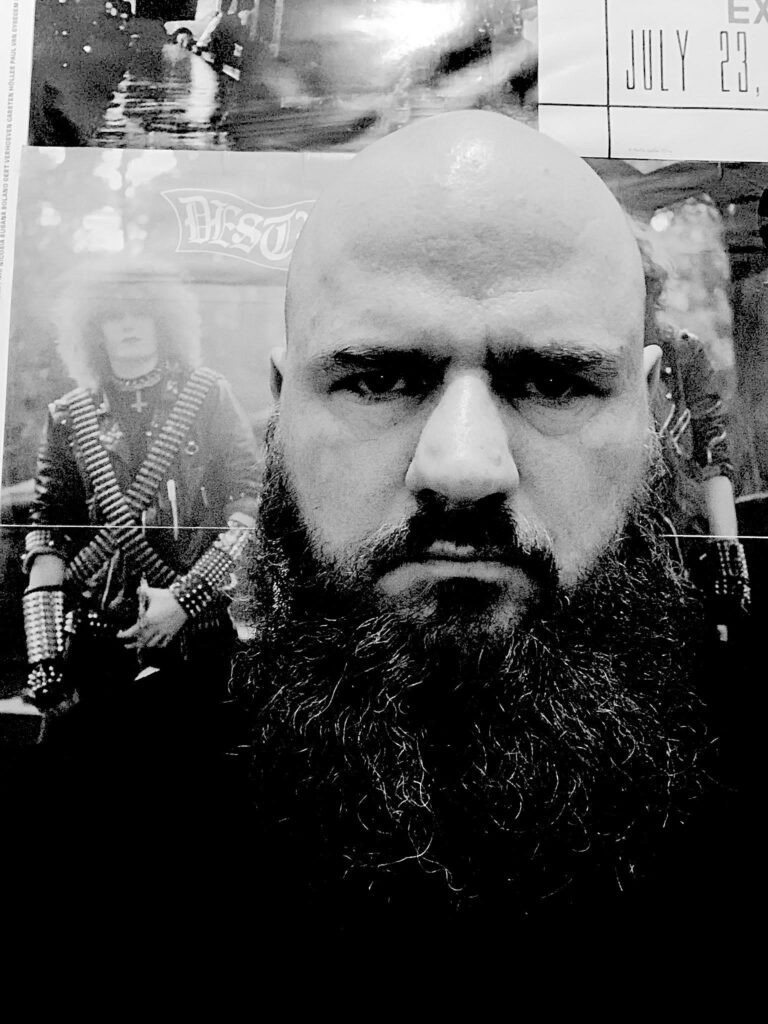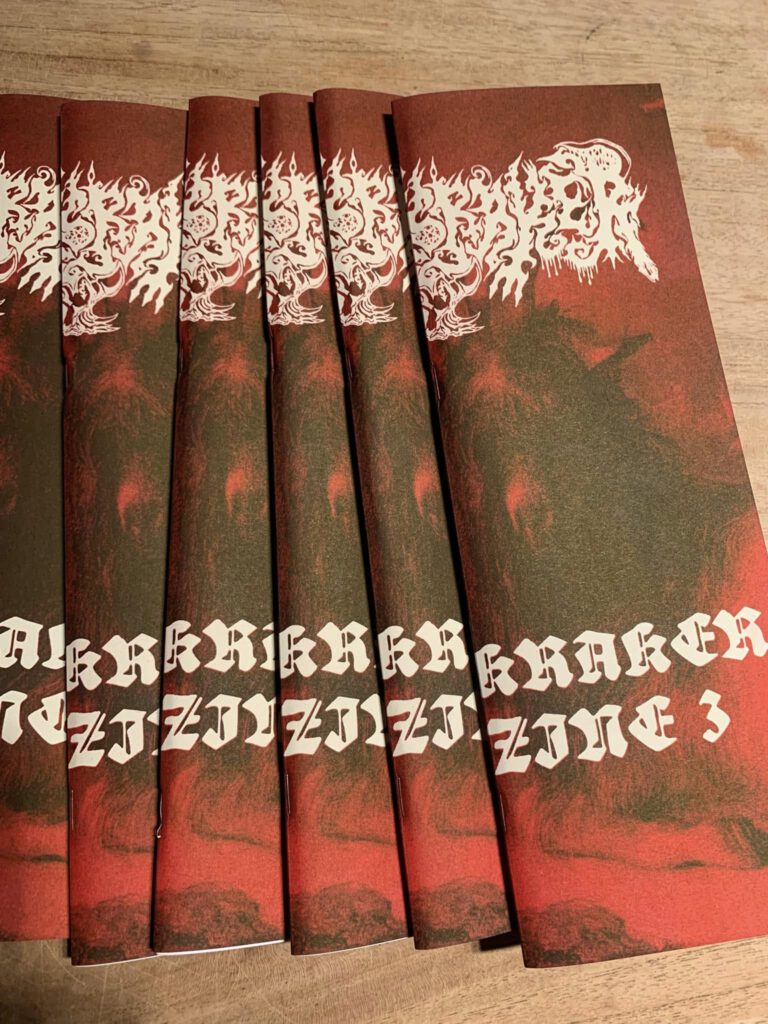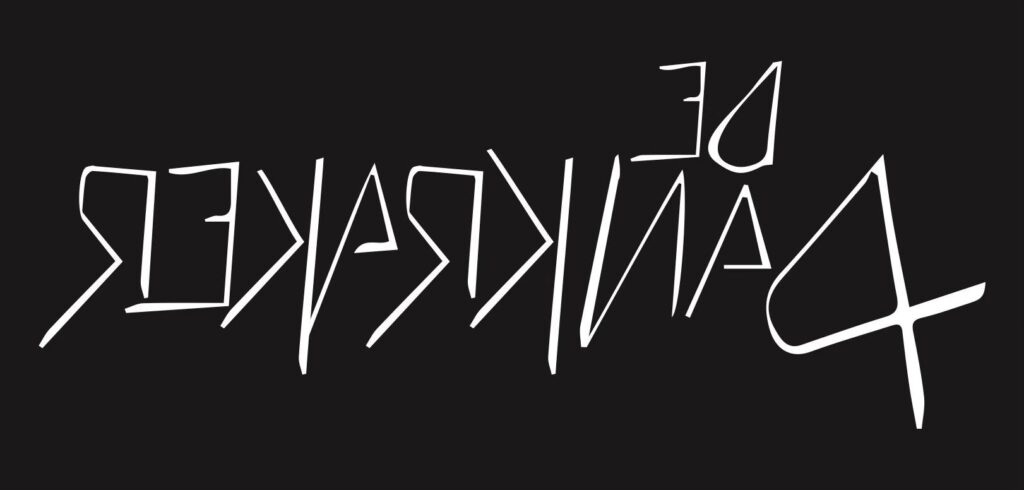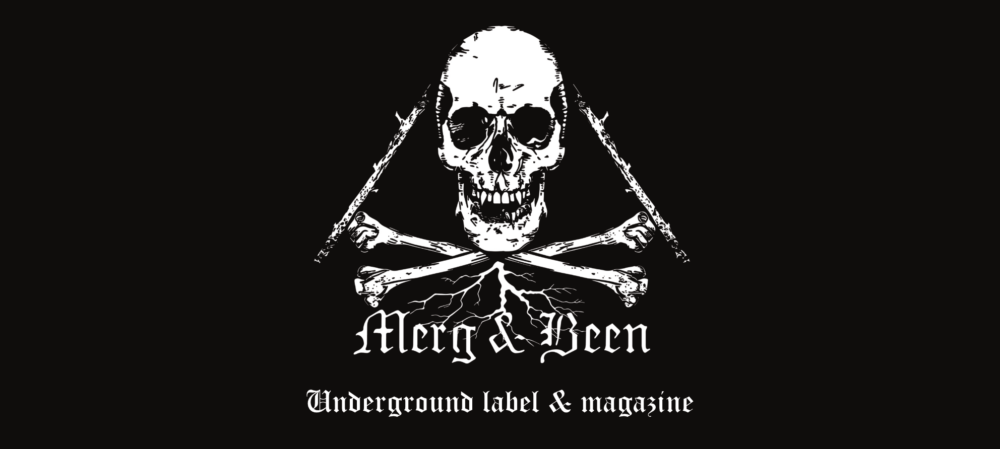
De Pankraker: radio show, magazine, label, and festival… but where did it all begin?
It all started where it always starts: with eagerness. After all, that’s my middle name. But in truth, everything really began with a radio show. At one point, a friend of mine, whose taste in music was quite different from mine, was venting on social media about the poor state of radio programming. Radio as a medium never really captivated me, so I replied that he should just spin his own records and, by extension, go on his own hunt for discoveries rather than rely on radio, where the mainstream always rules. Of course, I didn’t write all that out. I just left it at: “play your own records.” A few seconds later I got a private message asking: “What do you mean? Are we starting a radio station?” That wasn’t what I had in mind, but somehow my fingers typed yes.
The following week, four of us sat down together, and six months later we launched the whole thing, with 25 DJs on board. The range of genres was broad, but the main idea was to give a platform to music and angles that traditional radio simply ignored.
That’s how I ended up starting the De Pankraker radio show. One episode every week, for five straight years. By now, it’s wound down; it just became impossible to keep up. And besides eagerness, boredom is also my middle name. So after a while, to be honest, I had seen enough.

What was the starting point for a young Peter, and how did you first get drawn into Black Metal?
My entry into extreme metal began with Sepultura, which came quickly after first hearing Metallica. Arise had been out for a year, and a cousin handed me three tapes: the early Sepultura records (Morbid Visions / Bestial Devastation, Schizophrenia, Beneath the Remains, Arise), Pantera’s Vulgar Display of Power, and the Belgian (with a Dutch twist) Chemical Breath with their crushing Fatal Exposure. That same cousin also introduced me to death metal, where Morbid Angel made a huge impact. Especially because of those sick, blasphemous lyrics. And old Slayer of course.
I grew up in a Catholic household, somewhat estranged from the institution of the church, yet still firmly believing in the idea that each of our names is written in the palm of God’s hand. For a teenager like me, Morbid Angel’s lyrics were intoxicating. I even once corresponded with Judas Iscariot, who; in true teenage extremity, responded to my complaints about having to attend church every week with a call to kill my parents.
But really, everything started with radio and with the national magazine Humo. Studio Brussel, the Belgian national rock station, had a metal program that, besides classic heavy metal and hardcore, also carved out a space for the more extreme stuff. That’s where I first heard In the Woods…, Immortal, Rotting Christ, Enslaved, early Cradle of Filth, Belgian acts like Ancient Rites, and more. That’s when the quest began.
Around the same time, Humo ran the story about the murder of Øystein Aarseth by Kristian “Varg” Vikernes, and the church burnings. A warped answer to liberal society from a circle of privileged young Norwegians. What stuck with me most were the images of those burning churches, and from there I went searching for the music that would never let me go.
Trading music quickly became an almost daily obsession. Making mixtapes, swapping tapes and CDs. In a way, nothing has really changed since then, except the format. My missionis still to shove music in people’s faces. All those different outlets you mention are just possible forms of the same goal. And nothing gives me greater joy than when someone comes up to me after a festival and says they’ve made discoveries. To me, that’s far more interesting than just booking the same band yet again.
The magazine originally grew out of an idea to write a book about the Dutch Black Metal scene. Why did that book never materialize?
Quite simple, really. Three crucial bands refused to cooperate in telling the story of the Dutch black metal scene. I won’t drop names here, but believe me, without those bands, you simply couldn’t tell the story properly. By then, of course, I had already gathered material and drafted sections of chapters. I didn’t want to let that work go to waste, so I started looking for another format. That eventually became the magazine, which two months ago slowly but surely reached its third issue and for which I now have two companions.
In it, I included the final pieces that were originally meant for the book, most notably the mighty Inverted Pentagram. With the book, I also had to interview bands that, personally, I wasn’t particularly fond of but that were important for the sake of completeness and their significance for the Dutch scene. Those pieces didn’t make it into the magazine, because I see that as a different discipline. One that, in my view, should be rooted in my own taste.
In that sense, the magazine actually made more sense than the book, since my personal taste is really the key to everything I do.

From that book idea, the magazine was born — a publication with a very distinctive look. How did you come up with the idea for its unique format, choice of paper, and design?
At first, I had the idea to make a real newspaper. Like the Belgian Mindview back in the day, but with a different design. Then I came across a Dutch magazine from the 1960s, an anarchist publication in long A4 format. That just clicked for me. Incidentally, the covers are printed at an art foundation in the Netherlands, using a printing technique recommended by Bob Mollema. The basic concept for how the logo appears on the cover came from Jeroen Pede. My own idea was to place a dark painting from Dutch art history on each cover. Everything else in the magazine is my own work. And honestly: clumsiness reigns there. I’m a terrible designer. Luckily, I have plenty of friends who are designers, and every now and then they’ll give me a tip along the lines of: “yeah, you really shouldn’t do that anymore.”
The format itself also creates challenges. To this day, I haven’t found a copy shop that folds lengthwise. So I always print everything at a copy center, then we fold and staple it ourselves. That last bit is done by my wife. She gets the worst job. But in a way, it fits perfectly within the DIY tradition that black metal thrives on. I’m always surprised when someone says it actually looks good. Once, someone with a bit of weight in the scene (no names) told me the layout inspired his own artwork. I found that both baffling and deeply amusing.
On July 15th, 2024, a new chapter began for De Pankraker with the release of Witchfukker’s debut album. How did that project cross your path?
These young maniacs with a deep love for old-school metal, delivering a raw death/thrash debut that rips your head off: I love them.
The label itself grew out of two old dreams. First: owning a record store: inspired by places like Rataplan in Ghent in the nineties and Crypt of the Wizard in London today. The smell of vinyl, stumbling upon rare gems, endless conversations about music: that was the dream. A shop in Ghent almost became reality, but in the end it turned into a distro instead. My wife was stressed about it, and friends advised me that a distro works best in combination with a label. Which suited me just fine, because releasing records was the other dream.
I first read about Witchfukker in the brilliant Belgian magazine Malignant Defekatiön, and I was already in touch with the black/thrash maniac behind Destruktion Records, who had put out tapes for them. I had already played them on my radio show, where Jesper in particular responded with great enthusiasm.
I then saw them open for Profanatica in Antwerp, asked them about their debut, and they told me no label was involved yet. I laughed and told them I would start a label just to release it. They were into the idea, but I also half-joked that they should probably look for a “real” label. A few months later they came back, and last year their blistering debut came out through De Pankraker Records.
As for the scope of the label, it’s simple: extreme metal (or music) that I personally love. Mostly somewhere between black, death, and thrash. My taste is the only filter. That’s why a band like Bacht’n De Vulle Moane, who fuse black metal with other genres, also makes sense for me. I’m really into old prog rock and also the electronic sound of DAF and Klaus Schulze, two artists that inspired them a lot. And there are more bands coming up that sit at the fringes of black metal.
It’s funny, some people assume I’m only interested in one genre, namely war metal. I find that strange, but I don’t mind. Don’t get me wrong: I’m absolutely thrilled about the release of BLOED, who unleashed a devastating war metal tape. A band with massive potential, not just rehashing their heroes but, like you rightly pointed out in your review, bringing in, for example, a solid d-beat vibe.
Honestly, I’m proud of my small selection of releases so far: the low-tuned black metal madness of Satanic Black Blood; the collection of raw, death-tinged demos from Serpent Mass; or the ragged tribute to Baron Blood from the fantastic Dead Dog’s Howl, which I had the honor of pressing to vinyl for the first time. I’m deeply satisfied with all of it, even if not every release is a commercial success.

From 2023 onwards, concerts were added to the mix, and eventually even a festival, which in 2025 grew into a full two-day edition. Did you somehow find some extra free time, or do your days last 36 hours?
If only. That would really be my thing. But there’s still so much left to do and always without any particular plan. It’s all about acting on impulse. As I said: it’s all eagerness. Maybe one day that will fade, but people around me keep wondering when. Because of course, they’re inevitably dragged along for the ride.
Take my wife, for example. She actually only listens to doom metal, yet ends up doing the entrance desk for two days straight in deafening noise at the festival. And the stock that’s been sitting in our living room for the past year and a half, that probably wasn’t what she signed up for either, to be honest.
On top of all that, you also run a webstore featuring fairly obscure bands whose names don’t always immediately ring a bell. Through that, you also offer something you’ve called a kind of “Tupperware party.” Could you explain how that works?
As I said, I always want to shove new music into people’s faces. My ultimate ambition isn’t really to sell records: it’s to introduce people to new, good music. Under the name Black Wax Rituals, you can invite me over. I’ll lay out about ten records that I personally love, all available for purchase. I set up my entire stand right in your home. You can buy records, and the host or hostess invites a small group of people: ideally eight to ten guests.
For every record sold at €250, the host or hostess receives a €25 credit in my shop. Think Tupperware parties: but with records instead. I heard Tupperware went bankrupt, so this seemed like the perfect way to resurrect their tired old concept.

Your fascination with the Dutch Black Metal scene is well-known, but what about the Belgian scene? Do you have any tips on hidden gems we might not know yet?
In the 1990s, I didn’t find the Belgian black metal scene all that compelling. Sure, we had Enthroned (killer promo, solid debut), Ancient Rites, and Lugubrum. Gotmoor put out a decent demo with Dicht Bi Den Heerd. But honestly, most of it felt like gloom and misery without much substance. Of course, there was Noctran Demanto, but truth be told, very few people knew about them back in the ’90s. I didn’t either, even though I was digging deep at the time. I only discovered them later on, through reading and conversations about the Black Flame Festival in the Netherlands.
For the most part, though, there was a lot of mediocrity. A sad state of affairs. By the 2000s my interest in black metal had started to fade; to me, the scene felt completely drained. I wasn’t hearing anything exciting anymore and eventually stuck to spinning my old records. One band I really regret missing in those years was Paragon Impure, who delivered a devastating masterpiece with To Gaius! (For the Delivery of Agrippina). Arguably one of the best black metal albums ever produced in Belgium. Alkerdeel emerged in 2005 and brought something fresh to the table, but for me, the Belgian black metal scene today is far more compelling than it was 20 or 30 years ago.
Just listen to what bands like Perverted Ceremony, Moenen of Xezbeth, or Forbidden Temple are doing. Or check out the Ancient Hounds Circle: Crypts of Wallachia, Mischievous Wraith, Orkblut, Regnum Tenebrarum, Selenite Scrolls. The level of quality is remarkable. Then there’s Serpent Mass, Shewolff with theirblack metal/punk hybrid, or the more traditional but powerful sound of Walghinge. And of course the great Bacht’n De Vulle Moane and Apovrasma.
On top of that, we have labels like Gramschap, Medieval Prophecy Productions, Zombi Danz, but also Phantom Lure and Haunted by Ill Angels, all releasing fascinating material. The Belgian underground is buzzing with creativity today. Not to mention passionate bookers like Only Death Is Real who help keep the fire alive.
What matters now is that we keep working within a network. The scene is simply too small for other behaviour.
Finally, is there still something left on your bucket list? A documentary, finally writing that book, or perhaps something else entirely? The final words are yours…
I don’t have a bucket list. It’s eagerness, baby, that’s what it’s all about. And remember: we’re only in it for the money. 🙂Thanks to everyone who supports us and the bands we released so far.
De Pankraker:
Instagram
Facebook
Website

